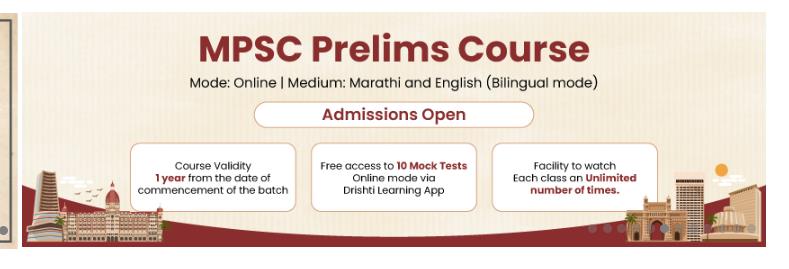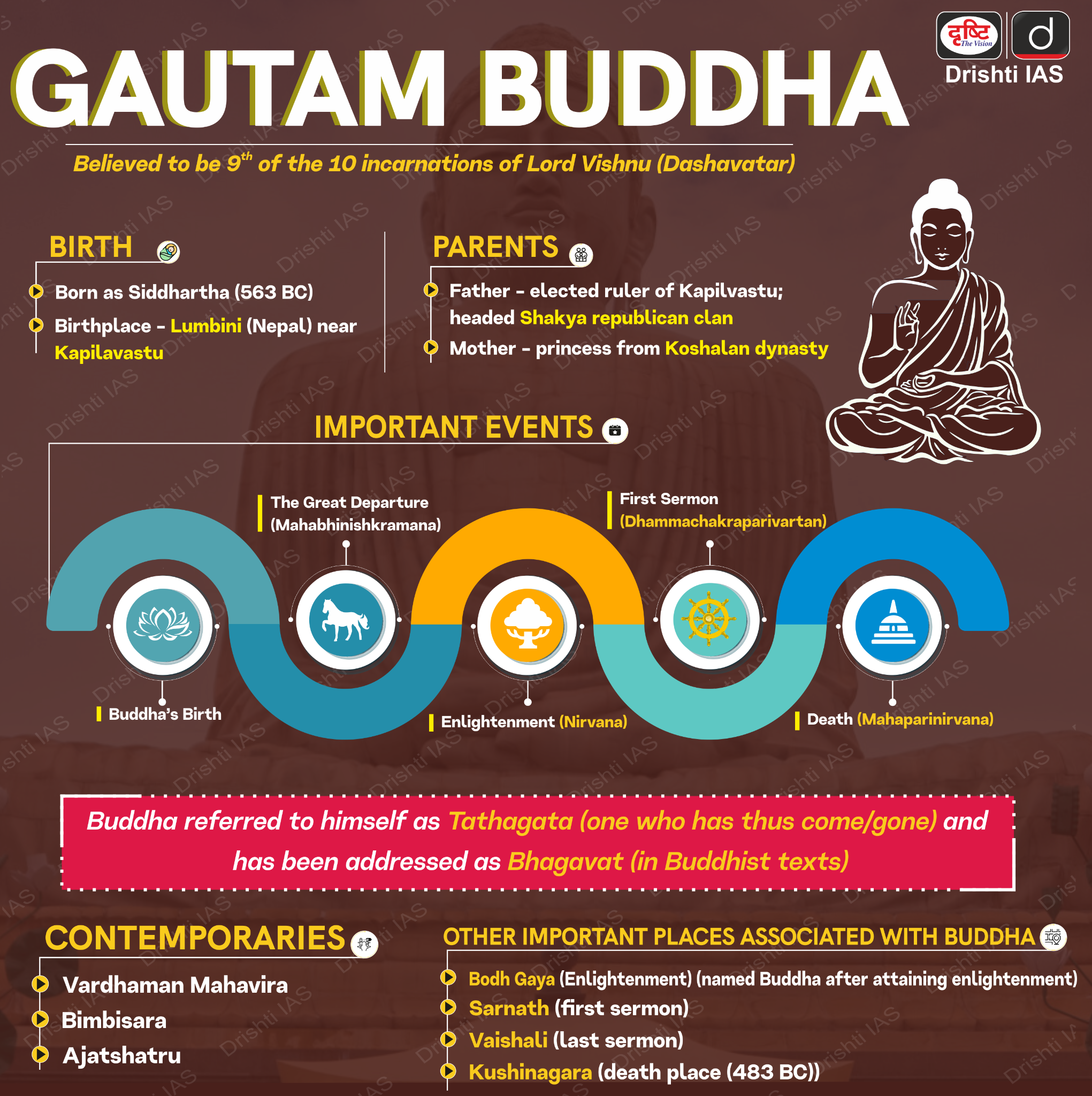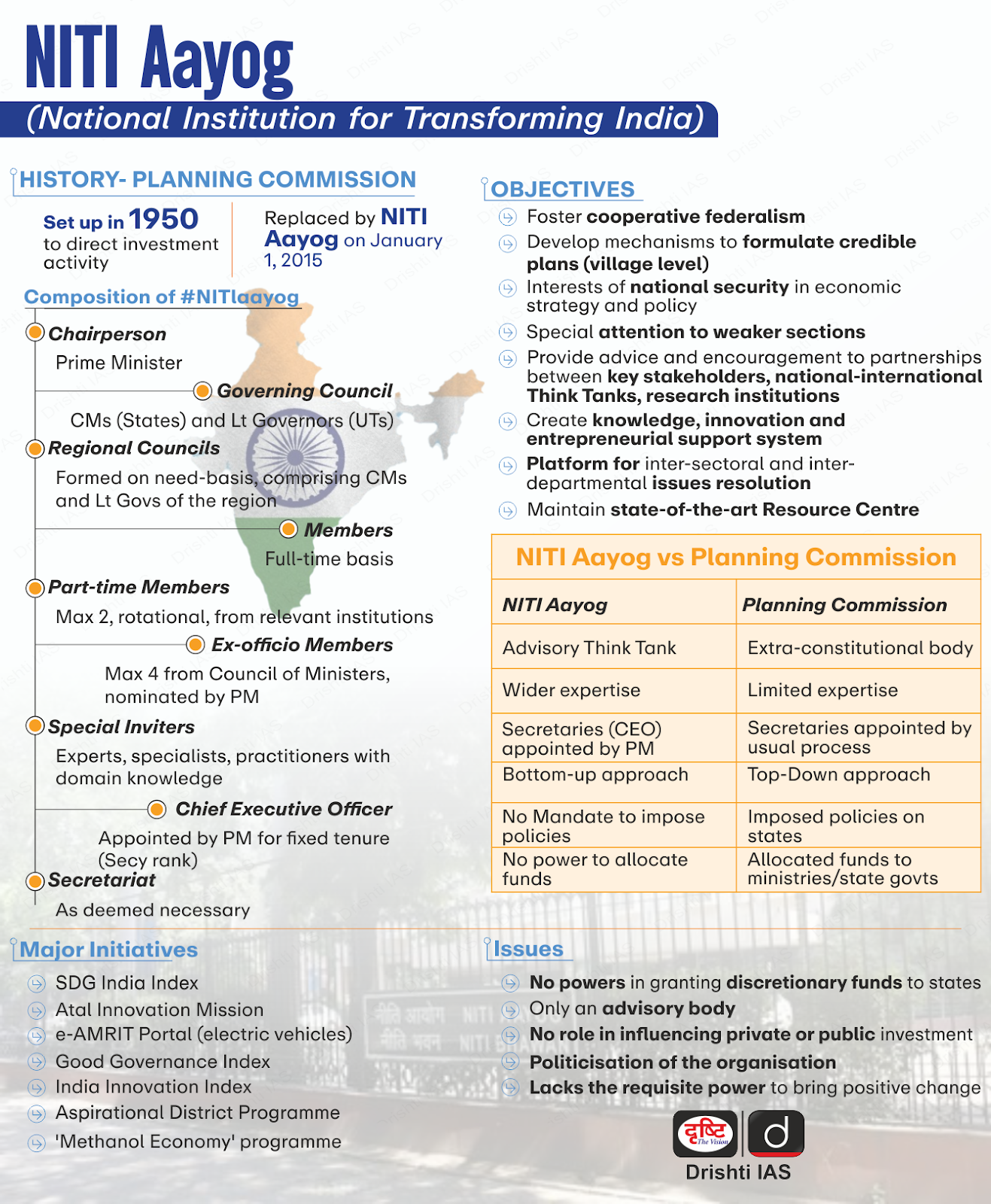Madhya Pradesh Switch to Hindi
Railway Infrastructure Projects under PM Gati Shakti Plan
Why in News?
The Cabinet Committee on Economic Affairs has approved two major railway infrastructure projects in Madhya Pradesh and Maharashtra, with a combined estimated cost of ₹3,399 crore, under the PM Gati Shakti National Master Plan.
Key Points
- About the Railway Projects:
- The projects will span approximately 176 kilometers, covering four districts across Maharashtra and Madhya Pradesh.
- They are scheduled for completion by the fiscal year 2029–30.
- These projects aim to boost connectivity, streamline the movement of passengers and freight, and foster regional development.
- The projects align with the vision of a “New India” by promoting regional development and boosting employment to make local communities self-reliant (Atmanirbhar).
- Impact on Villages and Local Economy:
- The expanded railway capacity is expected to benefit 784 villages, directly impacting a population of nearly 19.74 lakh people.
- The corridors are crucial for transporting key commodities like coal, cement, clinker, gypsum, fly ash, containers, agricultural produce, and petroleum products.
- The initiative will create both skilled and unskilled job opportunities, contributing to rural livelihoods.
- Freight Capacity and Economic Benefits:
- The projects are projected to handle an additional freight load of 18.40 million tonnes per annum (MTPA).
- Enhanced freight movement will help optimize supply chains, reduce logistics costs, and accelerate economic growth in the region.
- Environmental Impact:
- The new railway lines are expected to reduce oil imports by 20 crore litres.
- They will also cut CO₂ emissions by 99 crore kilograms, which is equivalent to planting 4 crore trees.
- This aligns with India’s commitment to sustainable infrastructure and a low-carbon economy.
PM GatiShakti National Master Plan
- About:
- The PM Gati Shakti National Master Plan, launched in October 2021 is a transformative Rs. 100 lakh crore initiative aimed at revolutionising India’s infrastructure over the next five years.
- It has been developed as a Digital Master Planning tool by BISAG-N (Bhaskaracharya National Institute for Space Applications and Geoinformatics).
- It has been prepared in a dynamic Geographic Information System (GIS) platform wherein data on specific action plans of all the Ministries/Departments have been incorporated within a comprehensive database.
- The plan seeks to accelerate project completion, reduce timelines, and enhance India’s global competitiveness by breaking down inter-ministerial obstacles.
- The vision of PM GatiShakti is to create a world-class infrastructure that improves the ease of living, boosts economic growth and makes Indian businesses more competitive.
- Key Features:
- Digital Integration: It is a digital platform designed to integrate the efforts of 16 ministries, ensuring seamless infrastructure planning and execution across sectors.
- Multi-Sector Collaboration: The platform incorporates infrastructure initiatives from several major programs, including Bharatmala, Sagarmala, inland waterways, dry ports, and UDAN.
- Economic Zones: Focuses on developing key economic areas such as textile clusters, pharmaceutical hubs, defence corridors, and agricultural zones to boost economic productivity.
- Use of Technology: Advanced spatial planning tools and ISRO satellite imagery, developed by BiSAG-N, provide data-driven insights for project planning and management.
Cabinet Committee on Economic Affairs (CCEA)
- It is chaired by the Prime Minister and sets priorities for public sector investments.
- It continuously reviews economic trends to develop an integrated economic policy framework and oversees policies and activities in the economic field, including foreign investment, requiring high-level decisions.
Maharashtra Switch to Hindi
Bharat Gen: India’s First Indigenous AI Model
Why in News?
Union Minister for Science & Technology launched ‘Bharat Gen’—India’s first indigenously developed, government-funded, AI-based Multimodal Large Language Model (LLM) for Indian languages, at the BharatGen Summit.
- India has emerged as a global leader in AI, with platforms like the Centralised Public Grievance Redressal and Monitoring System (CPGRAMS) serving as international benchmarks for citizen engagement and effective grievance redressal.
Note:
- LLMs are large general-purpose language models capable of solving common language problems such as text classification, question answering, and text generation.
- These models are trained on massive datasets to understand patterns, structures, and relationships within human language.
Key Points
- About Bharat Gen:
- Bharat Gen is a part of the National Mission on Interdisciplinary Cyber-Physical Systems (NM-ICPS) and aims to create AI that is ethical, inclusive, multilingual, and deeply embedded in Indian values and ethos.
- It is implemented through the Technology Innovation Hubs (TIH) Foundation for IoT (Internet of Things) and IoE (Internet of Everything) at IIT Bombay.
- The project integrates text, speech, and image modalities, offering seamless AI solutions in 22 Indian languages.
- It aims to transform sectors like healthcare, education, agriculture, and governance by delivering region-specific AI solutions.
- Bharat Gen is a part of the National Mission on Interdisciplinary Cyber-Physical Systems (NM-ICPS) and aims to create AI that is ethical, inclusive, multilingual, and deeply embedded in Indian values and ethos.
- AI and Education:
- BharatGen echoes the inclusive spirit of the National Education Policy (NEP) 2020, which promotes interdisciplinary learning, helping students combine technical and social sciences for better innovation and employability.
- Launch of Generative AI Hackathon 2025:
- The summit also marked the launch of the Generative AI Hackathon 2025, inviting students to tackle real-world challenges using AI.
- MoUs at the Summit:
- The BharatGen Summit hosted major Memorandum of Understanding (MoU) exchanges to deepen collaboration across government agencies, academia, and research institutions.
National Mission-Interdisciplinary Cyber-Physical Systems
- About:
- It was launched in 2018 by the Ministry of Science and Technology with an outlay of Rs. 3,660.00 crore for a period of five years to encourage innovation in new age technologies.
- It covers the entire India which includes Central Ministries, State Governments, Industry and Academia.
- Objectives:
- The NM-ICPS is a comprehensive Mission which would address technology development, application development, human resource development & skill enhancement, entrepreneurship and start-up development in Cyber Physical System (CPS) and associated technologies.
- The Mission aims at the establishment of 15 Technology Innovation Hubs (TIH), six Application Innovation Hubs (AIH) and four Technology Translation Research Parks (TTRP).
- These Hubs & TTRPs will connect to Academics, Industry, Central Ministries and State Government in developing solutions at reputed academic, R&D and other organizations across the country in a hub and spoke model.
- The Hubs & TTRPs have four focused areas along which the Mission implementation would proceed, namely:
- Technology Development,
- HRD & Skill Development,
- Innovation, Entrepreneurship & Start-ups Ecosystem Development, and
- International Collaborations.
Jammu & Kashmir Switch to Hindi
Lavender Festival 2025
Why in News?
Union Minister Dr. Jitendra Singh inaugurated the 2-day Lavender Festival 2025, organized by CSIR–IIIM Jammu, highlighting Bhaderwah’s transformation into a national hub for agri-business innovation.
- The cultivation of lavender, a fragrant flower, has not only given the town a national identity but has also become a symbol of India’s rural startup revolution.
Key Points
India’s Purple Revolution
- About the Lavender Festival: It is held annually to promote aromatic farming and marks a vital part of the ‘Purple Revolution’, a central initiative under the Aroma Mission to boost farmer incomes through high-value crops.
- Lavender Cultivation: The state of Kashmir in India is perceived as the hub of medicinal plants.
- Lavender, particularly, shows promising potential as a therapeutic and aromatic herb that can positively contribute to India’s economic and medical prospects.
- Lavender is suitable for J&K’s climate, tolerating cold winters and mild summers.
- It is a low maintenance crop with the productive life of about 15 years starting from the second year.
- It provides higher returns compared to traditional crops.
- Bhaderwah has emerged as the lavender capital of India, turning many former conflict-ridden villages into hubs of agro-based prosperity.
- Lavender, particularly, shows promising potential as a therapeutic and aromatic herb that can positively contribute to India’s economic and medical prospects.
- The Aroma Mission: It was launched by the Ministry of Science & Technology and the Council of Scientific & Industrial Research (CSIR).
- It aims to promote lavender cultivation commercially to boost farmers' income.
- Lavender oil sells for around ₹10,000 per liter.
- Other products include medicines, incense sticks, soaps, and air fresheners.
- Mission Progress and Future Plans:
- Phase-I Achievements:
- Reached 46 aspirational districts across India.
- Trained over 44,000 farmers and entrepreneurs.
- Phase-II Goals:
- Plan to employ over 45,000 skilled workers.
- Targeting support for more than 75,000 farming households nationwide.
- Phase-I Achievements:
- Branding and Market Expansion:
- One District One Product (ODOP) Initiative:
- Lavender is designated as the "Doda brand product" under ODOP-DEH (Districts as Export Hub) scheme.
- Helps promote lavender cultivation and support farmers, entrepreneurs, and agribusinesses.
- One District One Product (ODOP) Initiative:
- Overall Mission Objectives:
- Revolutionize India’s fragrance industry.
- Expand the aroma sector and generate rural employment.
- Support cultivation, product refinement, market development, and expansion strategies for lavender.
Significance of the Lavender Festival
- Rising Incomes and Employment:
- Lavender cultivation has become a major source of income for local farmers and entrepreneurs.
- On average, young individuals involved in lavender farming in the region are earning more than ₹65 lakhs annually.
- This growth has led to increased interest in agriculture as a viable and profitable career option.
- Infrastructure and Market Access:
- Around 50 lavender distillation units are currently operating in Bhaderwah.
- These units process lavender into various products that are distributed to states such as Maharashtra and beyond.
- The presence of this infrastructure has created a strong value chain and opened new market opportunities.
- National Recognition and Policy Alignment:
- The lavender initiative aligns with national programs like Startup India and Standup India, which aim to promote entrepreneurship and self-reliance across different sectors.
- Expanding the Scope of Startups:
- Lavender farming in Bhaderwah challenges the traditional notion that startups are limited to technology or urban centers.
- The model shows that individuals from diverse backgrounds, including rural and non-technical sectors, can succeed as entrepreneurs.
- Efforts are being made to encourage participation from all age groups, including senior citizens, in upcoming editions of the festival.
- Interest from Other Regions:
- The success of lavender cultivation in Bhaderwah has attracted interest from states like Himachal Pradesh, Uttarakhand, and the Northeast, with representatives attending the festival to explore its replication.
Uttar Pradesh Switch to Hindi
Homage to Sacred Buddha Relics
Why in News?
A veneration ceremony was held at the National Museum (New Delhi), where devotees gathered to pay their final respects to the sacred relics of the Buddha before they returned to Sarnath for re-enshrinement at the Mulagandha Kuti Vihar Temple, Sarnath, Uttar Pradesh.
- The ceremony was organized by the National Museum and the International Buddhist Confederation (IBC) with support from the Ministry of Culture.
Key Points
- About the Relics:
- These relics are enshrined in the Mulagandha Kuti Vihar Temple located in Sarnath, Uttar Pradesh.
- It is run by the Mahabodhi Society, which was founded by Anagarika Dharmapala.
- The remains were excavated by H. Longhurst at Nagarjunakonda (Andhra Pradesh) during 1927–1931.
- These relics were handed over to the Mahabodhi Society on 27th December 1932 by Rai Bahadur Dayaram Sahni on behalf of the Viceroy of India.
- These relics are enshrined in the Mulagandha Kuti Vihar Temple located in Sarnath, Uttar Pradesh.
- Spiritual Significance of Sarnath:
- Sarnath is regarded as one of the most revered pilgrimage destinations in Buddhism, especially in the 21st century.
- It was at Sarnath that Gautama Buddha delivered his first sermon after attaining enlightenment, thereby setting the Dharmachakra (Wheel of Dharma) in motion.
- Sarnath is also considered the birthplace of the Sangha—the community of the Buddha's disciples and followers.
- Emperor Ashoka is believed to have constructed the Dhameka Stupa at Sarnath in 249 BCE, commemorating the Buddha's first sermon.
- In the 12th century CE, the wife of King Govinda Chandra commissioned the Dharma-Chakra-Jina Vihar monastery at Sarnath, further enriching its spiritual heritage.
International Buddhist Confederation (IBC)
- It is the largest religious Buddhist organization.
- The aim of the association is to build the role of Buddhism on the global stage, to help preserve Buddhism's heritage, share knowledge and promote its values, and to represent Buddhism through meaningful participation in global dialogue.
- In November 2011 the 'Global Buddhist Congregation' (GBC) was hosted in New Delhi, where the attendees unanimously adopted a resolution to form an international umbrella body—the International Buddhist Confederation (IBC).
- Headquarters: Delhi
Uttarakhand Switch to Hindi
Regional Workshop on State Support Mission in Uttarakhand
Why in News?
NITI Aayog, in collaboration with the State Institute for Empowering and Transforming Uttarakhand (SETU) Aayog held a one-day Regional Workshop under the State Support Mission (SSM) in Dehradun.
Key Points
- About Regional Workshop:
- This workshop marked the first in a series under the SSM, aimed at fostering structured engagement between NITI Aayog and States/UTs through State Institutions for Transformation (SITs).
- The workshop aimed to bring together States and UTs to share experiences on SSM initiatives, promote peer learning and enhance collaboration for socio-economic development.
- It highlighted the pivotal role of SITs in driving State growth and shaping state visions.
- State Support Mission (SSM):
- Under this mission, NITI Aayog supports the States/UTs in capacity building and setting up State Institutions for Transformation (SIT).
- It aims to assist States/UTs in achieving their socioeconomic development goals by 2047, aligned with national priorities.
- The mission has been approved with a total outlay of Rs. 237.5 crore for the period 2022-23 to 2024-25.
- A State Economic and Transformation Unit (SETU) has been created at NITI Aayog to implement the Mission.
- Headed by a Joint Secretary-level officer (Mission Director), the unit includes a team of Director, Assistant Director, Innovation Lead, and Young Professionals.
- SSM would facilitate the strengthening of Sustainable Development Goals (SDGs) localisation efforts which in turn would aid further reduction in multidimensional poverty.
Jharkhand Switch to Hindi
Parasnath Hill
Why in News?
The Jharkhand High Court directed the state government to enforce a pre-existing ban on the sale and consumption of meat, alcohol, and intoxicants on Parasnath Hill, a site sacred to both Jains and the Santal Adivasi community.
Key Points
- Significance of Parasnath Hill: It is known as Parasnath to Jains and Marang Buru (literally “the Great Mountain”) to Santals.
- For Jains: It is the site where 20 of 24 tirthankaras including Parshvanatha, attained nirvana, many Jain temples and dhams are situated on the hill.
- For Santals: Marang Buru is the supreme animist deity and seat of justice. The Jug Jaher Than (sacred grove) on the hill is the most sacred dhorom garh (religious site) of the Santals.
- Lo Bir Baisi, the traditional Santal tribal council, convenes at the base of the hill to resolve inter-village disputes.
- The Santal Hul of 1855, led by Sidhu and Kanhu Murmu, was a major tribal uprising launched from Marang Buru.
- Parasnath Hill Dispute: A major flashpoint is the Sendra festival, a traditional ritual hunt held by the Santals on the hill.
- This practice, a rite of passage for Santal men, starkly contrasts with Jain values of non-violence and vegetarianism, leading to a legal battle between the Santals and the Jains.
- Santals: The Santal tribe, one of India’s largest indigenous communities, primarily resides in Jharkhand, West Bengal, Bihar, Odisha, and Assam.
- They speak Santali, a constitutionally recognized language (Eighth Schedule) with its own script Olchiki, created by Pandit Raghunath Murmu.
- Dance (enej) and music (sereng) remain core to their cultural expression during festivals and social gatherings.


.png)





.jpg)







.png)


.jpg)



 PCS Parikshan
PCS Parikshan.jpg)


.jpg)
.jpg)

.jpg)



